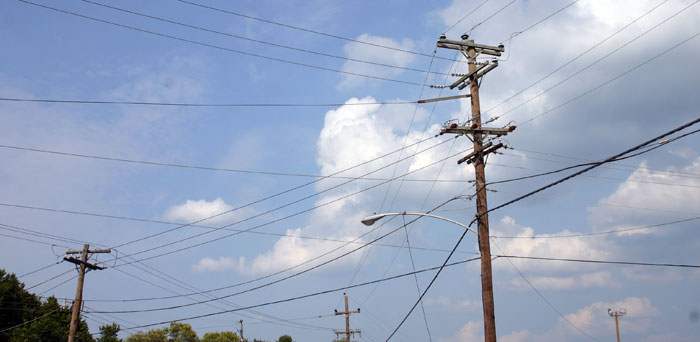Trees and power lines
The greatest eyesore in every traditional Pennsylvania city and town is an aerial labyrinth of utility wires supported by poles alongside most streets. Poles typically range from 35 to 75 feet high, depending on how many cables they are carrying and the voltage of the energized wires. Each building along the street is connected to the wires for cable, phone, and electric service.
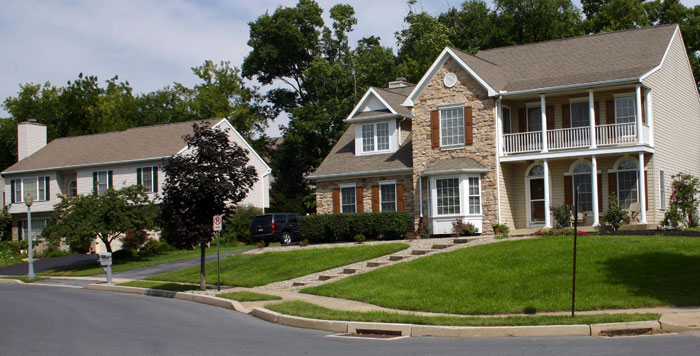
Aesthetics are respected in new development
In virtually all developments built in the last 60 years, utility wires have been placed underground. This has seldom been done in older towns, except in high traffic business districts. The reason is simple: Underground wiring is far more expensive than running wires on poles
Ironically, it is less expensive for a utility company to serve customers in traditional towns than it is in the suburbs, because there are many more customers per mile of service line. Therefore, because everyone pays the same rates, residents in traditional towns are essentially subsidizing the service for people living in the low density suburbs.
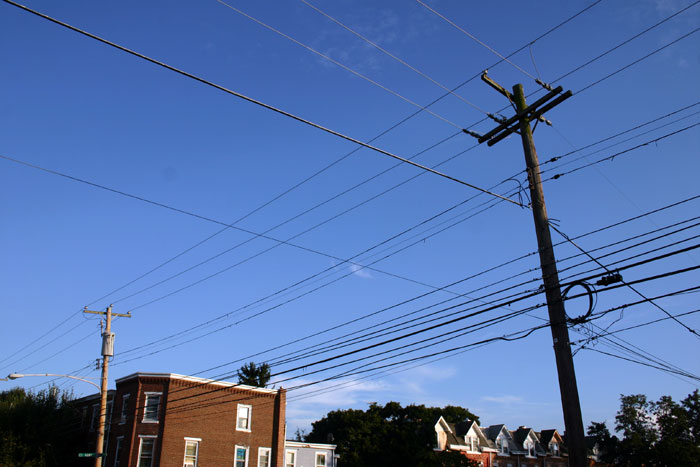
Traditional towns given second class treatment
In the late 1800s, when utilities providing electric power, telephone, and later, cable service, became available in established communities, the wires were strung from wooden utility poles lining the streets. Utility companies have no legal requirement -- and no financial incentive -- to place these lines underground.
To add insult to injury, power companies routinely butcher trees under their lines. This is simply not necessary.
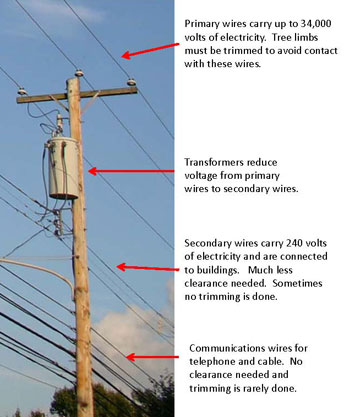
Clearing branches from lines
Electric companies must clear tree branches away from their power wires for safe and reliable service.
The more power going through the lines, the more clearance that must be provided.
But clearance is not needed for communications cables like telephone and cable wires. Tree branches can peacefully co-exist with them...
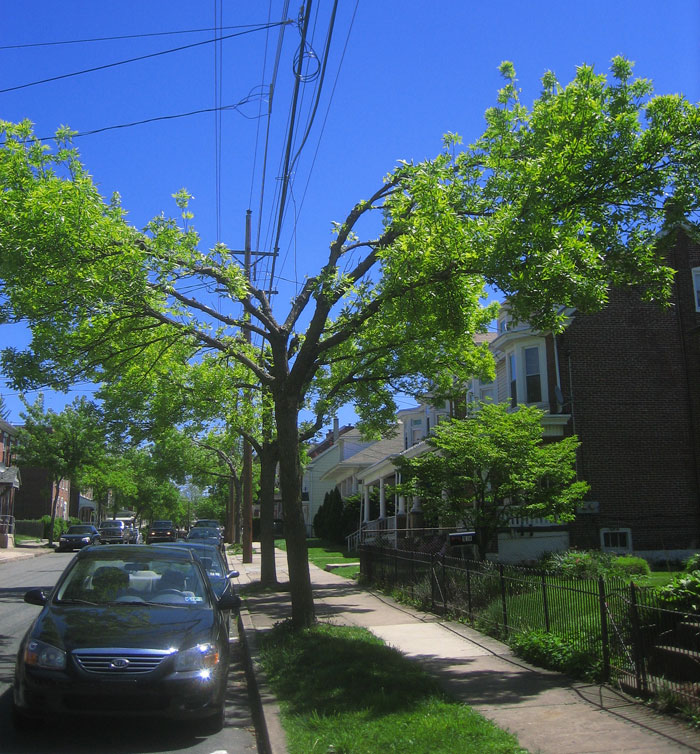
Clearance -- not appearance!
Power companies can clear tree branches away from power lines without ruining the appearance of the trees. Unfortunately, most power companies think it is less expensive to cut tree branches back wholesale. The more severely the tree is cut back, the thinking goes, the less often tree trimmers have to return to the same tree. In recent decades, many utilities have reduced their line clearance cycle from three years to five years to save money.
Their motto is "Clearance, not appearance!"
But traditional towns should not have to tolerate miles of ugly utility poles and disfigured trees. Public utility commissions should require power companies to either place lines underground or use tree-friendly wires called tree cable. See our page on "tree-friendly lines."

